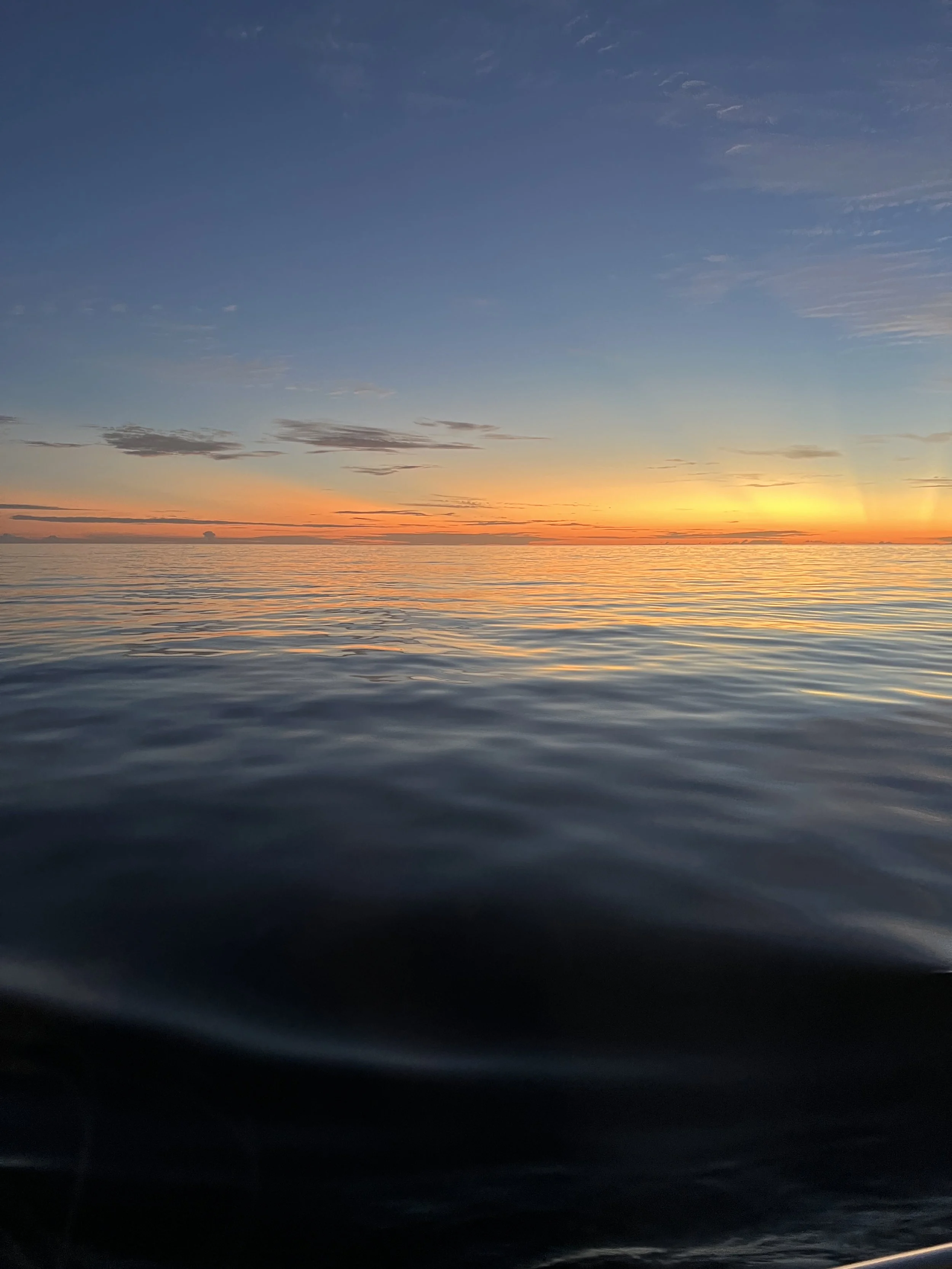DANGER IS IN THE EYE OF THE BEHOLDER
We accidentally sailed into a dangerous place. On reflection–of which there has been plenty –the name even sounds a smidge dodge. Welcome to Zamboanga! Our gentle friends of the Pacific and the welcoming people of Indonesia, plus our DRD4-7R genes, meant we had become quite relaxed.
We had been at sea for 3 days and 3 nights, sailing from Indonesia to the Philippines. For every hour of every one of those days we had been dodging fishermen and their low-lit bayou, or Fish Aggregating Devices (FADs). As we dropped the anchor, a text from my friend Gav landed: “Look into Mindanao and reassess access before going there. Although most of Philippines is safe, many parts are very dangerous.” I whipped back this screen shot with a predictable and appropriate expletive. The blue dot is us.
Not 24 hours earlier, we had met Jessie and John-John – who, with a new frame of mind now appeared to be a pair of your friendly garden variety kidnappers – you know, the smiling assassins you sometimes encounter out on the vast oceans. They met us in the actual middle of nowhere, deep in the Celebes Sea, literally one of the deepest seas on the planet at 6,200 metres. Their vessel, a contraption that looked and sounded like something out of Mad Max, approached us at speed. We had just passed their mothership (now affectionately named the Death Star), which was loaded with at least 25 men. They came at us fast, yelling. We shouted hello, they shouted back, pleasantries, we think, who knows? Now parked in Zamboanga Harbour our stranger-danger radar was registering a blip. Our perspective had swung on a dial.
There have been moments, standing in deep snow on mountain tops, when I’ve thought: I don’t know how safe I am here. I didn’t know how safe we were in Zamboanga. We locked the doors, click. The boys showed me where the polar bear spray and flares were kept (???). Clearly, without anyone saying it, it would be the small blonde girl they would steal. I like adventure but I don’t like danger.
Tired and scratchy, the more we read, the worse it felt. One dubious warning from the UK Travel Advisory: Do not travel by boat! We were a literal sitting (diesel) duck. A quick text to our trusted contacts in NZ confirmed, ‘Yep, get the F out of there’. We called the local authorities to gain some reassurance. The man chuckled kindly and offered what comfort he could. We spent an uneasy 48 hours clearing customs and plotting our escape - a 24-hour straight run north, tiptoeing through the backyard of the pirates.
In New Zealand I liked to hike the hills solo. I carried a PLB (personal locator beacon) because once, out at a restaurant, after going to the bathroom, I came out and was in a different restaurant. I got lost in a café. I have never taken the feeling of being safe for granted. I’ve always been mindful that the absence of danger is a privilege not afforded to everyone. Feeling safe is freedom but it’s slippery. Something can be dangerous and not dangerous at the same time, depending on your perspective, or perhaps your genetics.
Finding ourselves in the red zone of Zamboanga is not entirely our fault, you see. I have an inkling we have a high batting average for the DRD4-7R allele onboard our boat. Carriers of the ‘Explorer's Gene’ exhibit traits such as novelty seeking. They are persistently curious, have a high tolerance for risk-taking, and then there’s my favourite: resistance to routine or confinement. Ding, ding, ding, home-run. Sometimes referred to as the Wanderlust Gene, this DNA is most prevalent in populations with a history of migration: that’s us, 100% Kiwis. We are in good company. Based on their behaviour, Magellan, Shackleton and Earhart all possessed this genetic makeup.
The Filipinos are rule followers. They adhere to procedures, regulations and policies, with pleasure. No surprises, East Asian countries show lower frequencies of DRD4-7R. Our curiosity was driving us onward to Cebu City; we wanted to visit the place where Magellan was killed. The confinement was making us itchy and we had had enough of the novelty.
We weighed the risk, and the anchor, and set off. Our attempt to leave quietly was disrupted when Port Authorities contacted us loud and clear on Channel 16: Vessel Strannik, Vessel Strannik!!! We were required to report our intentions to the authorities. With no option but to acquiesce, we broadcast all the information a would-be hijacker would need. We checked the locks, let our NZ contacts know our plans, and left that town in our wake.
Needless to say we made it. It was a beautiful sail. Along the way every boat looked piratey and every light or movement looked scary. We took 4 hour watches. One vessel circled our boat twice, our crew mate held his breath, but did not wake us up. I was happy to drop anchor near Cebu City and call my Mum.
We have learnt our lesson. We look ahead a little more, and we tell this story a little sheepishly. I recognise it is a story about nothing bad actually happening.
My friend Mark Sedon said it best: “I am very afraid of dying, but I am even more afraid of not living.” He also says, “Never waste a day”. So that’s what we intend to do. After all, it turned out just fine for Magellan, Shackleton, and Earhart.




